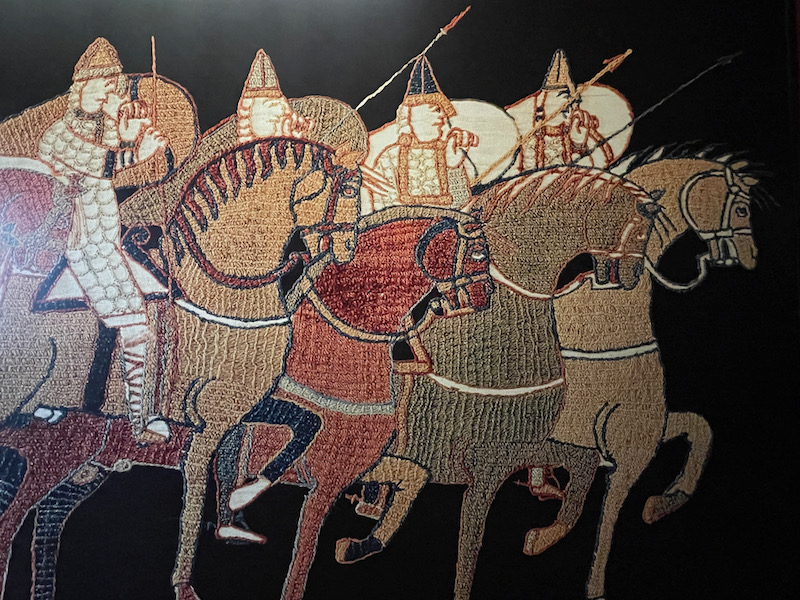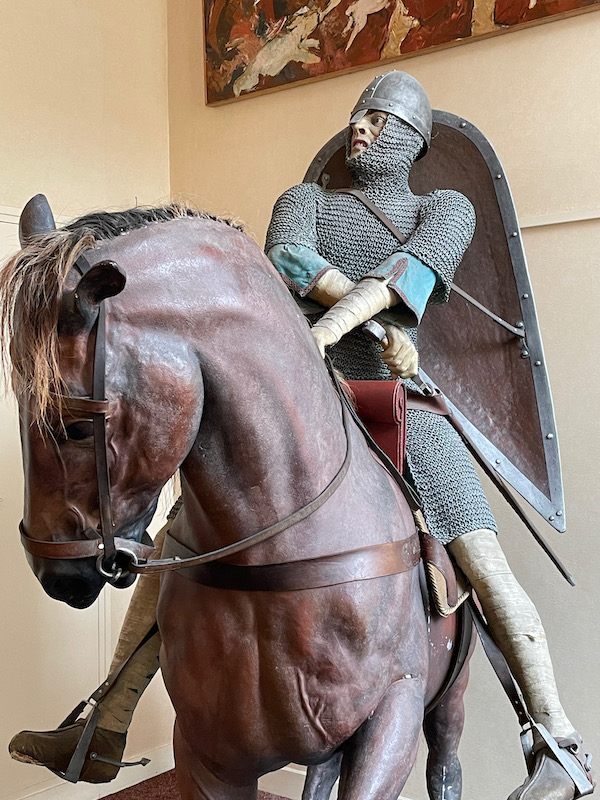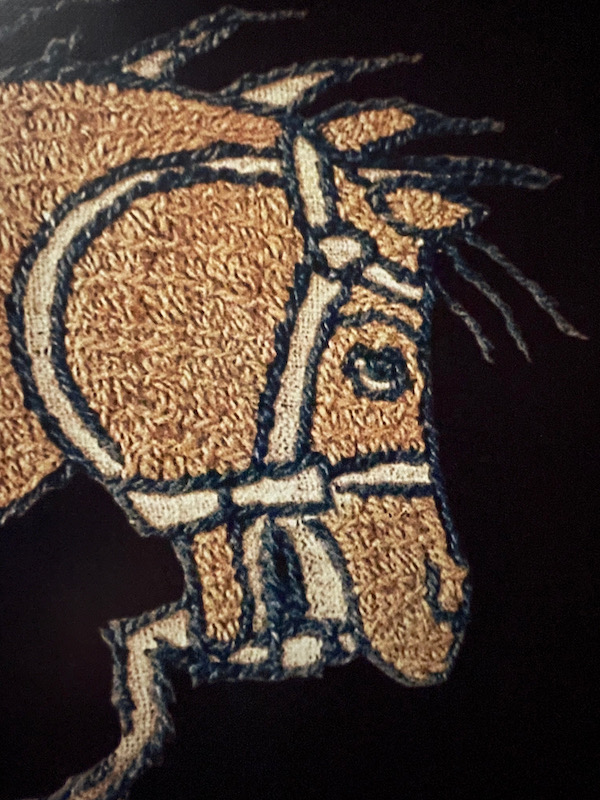Our Blog - Normandy 2023 - Bayeux, France
Our stop in Bayeux was mainly to see the Bayeux Tapestry, which I will talk about a little later in this blog. The town was founded as a Gallo-Roman settlement in the 1st century BC under the name Augustodurum. The city was largely destroyed during the Viking raids of the late 9th century but was rebuilt in the early 10th century. While there are a few other things to see in town, it is a major tourist attraction.
The Cathedral of Bayeux dates from the 11th century. The Carolingian cathedral that was here before was destroyed by the Vikings and its replacement church was burned down in 1046. A new cathedral was planned and Odo (half-brother of William the Conquerer) took advantage of the economic benefits of the Norman conquest of England to quickly complete the project with the dedication taking placein 1077. The Romanesque crypt is still from this original church. It was damaged by a fire in 1105 and the church was rebuilt gradually up until the end of the 15th century. By this time, Gothic was the style of the time and so you can see all of the Gothic architectural elements.
Looking at the front of the church, you can see the 5 porches although only 3 of them have doors, and the two large towers. Above the large window in the middle is a gallery with niches that used to have statues of 10 bishops ... but they have now been moved to just inside the entry door.
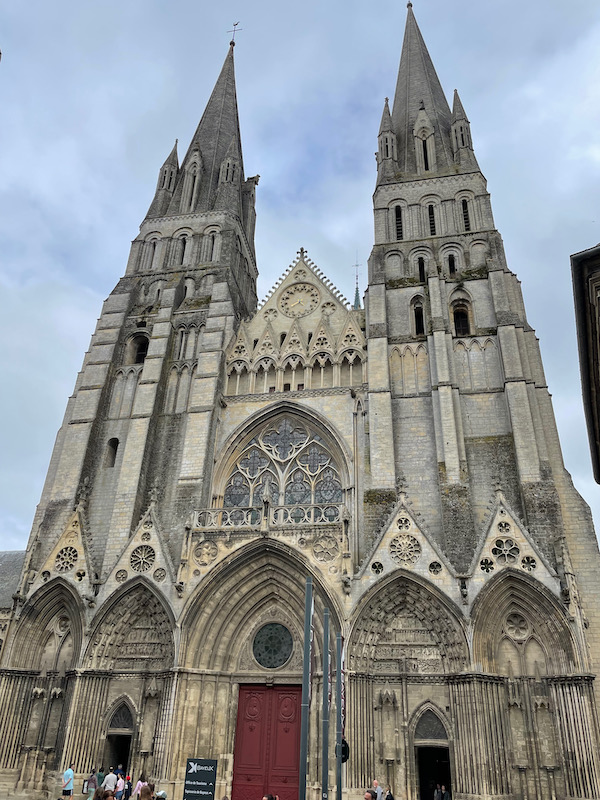
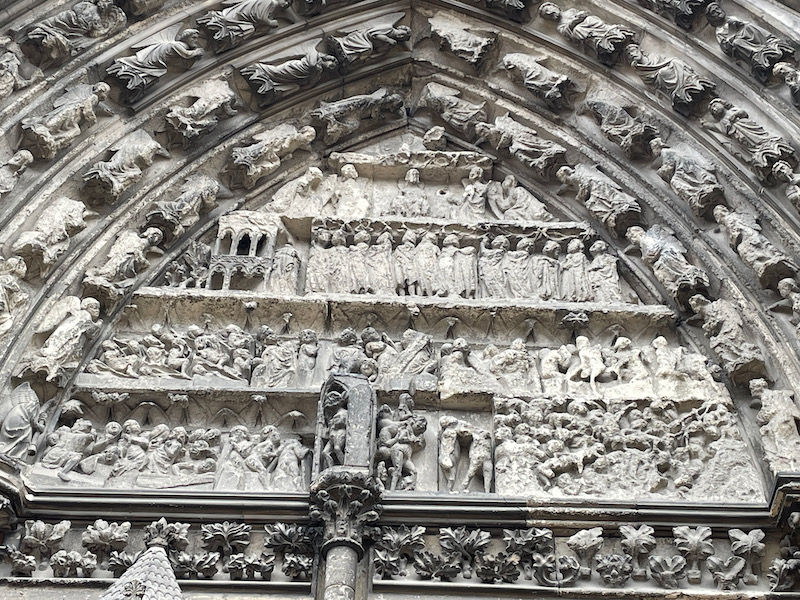
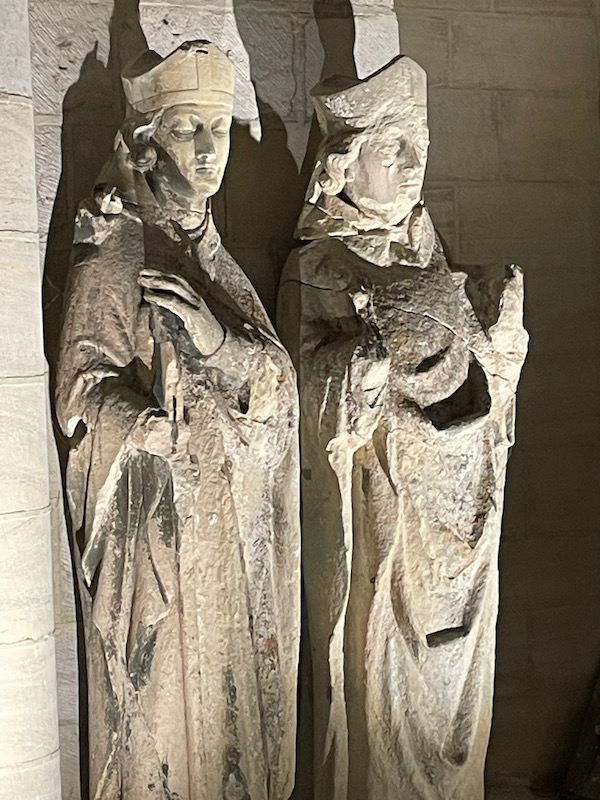
Looking down the nave, you can see the Romanesque arches and the very tall Gothic vaults. The ground level also has retained the Norman decoration with the low-relief interlacing patterns, dating back to the 12th century.
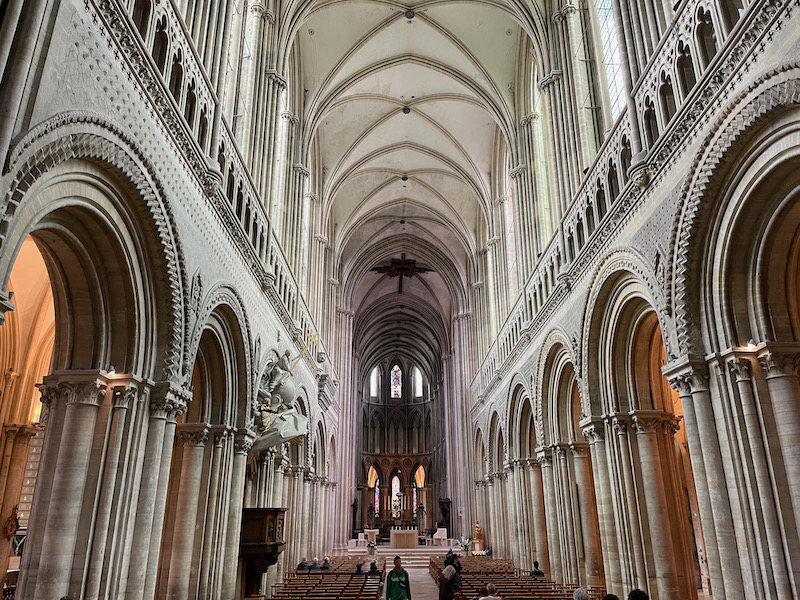
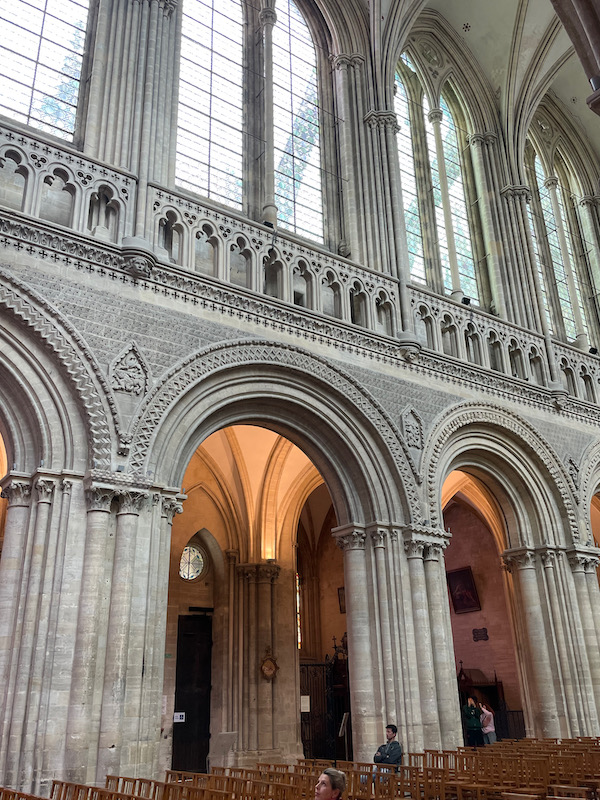
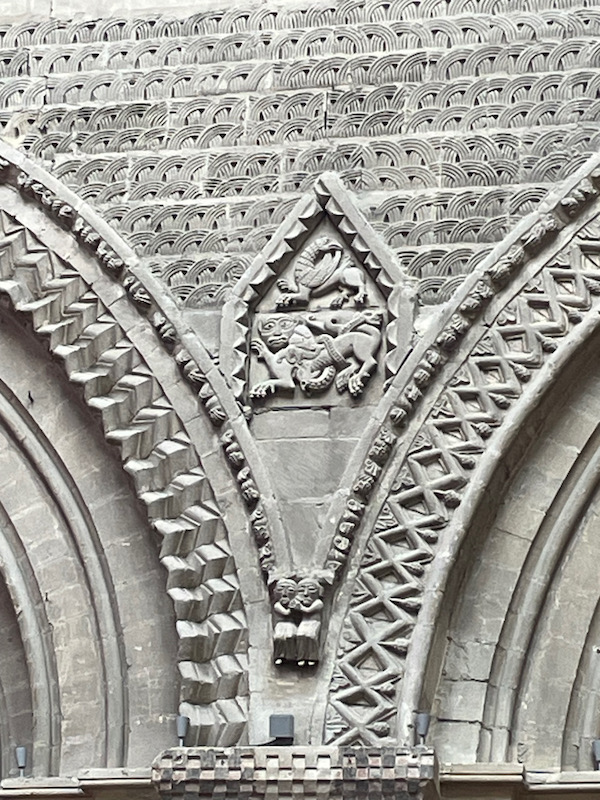
The altarpiece of this chapel, the Chapel of Saint Martin of the Vicaires, was one of the prettiest.
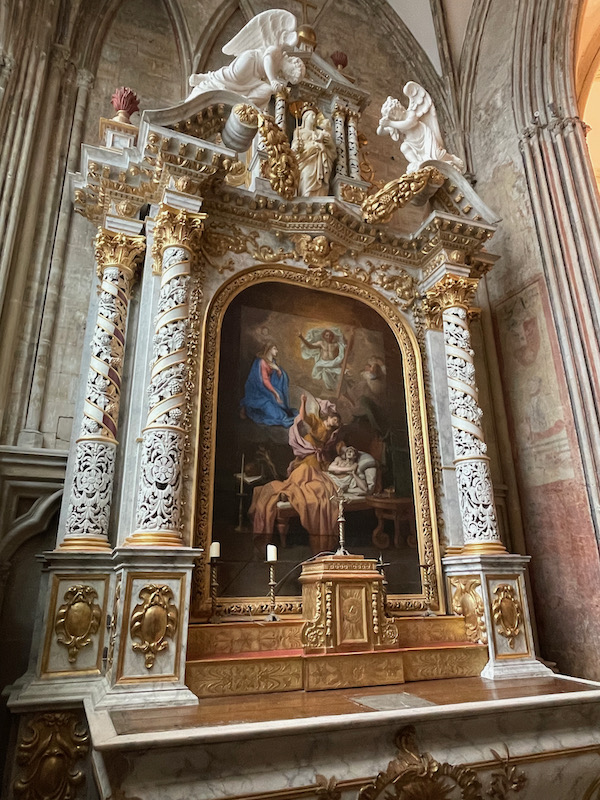
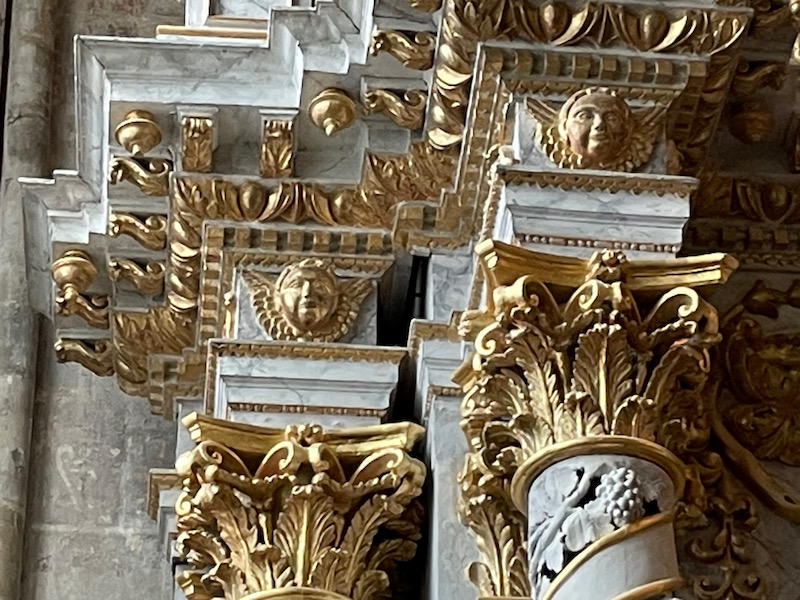
Just a few examples of the stained-glass windows.
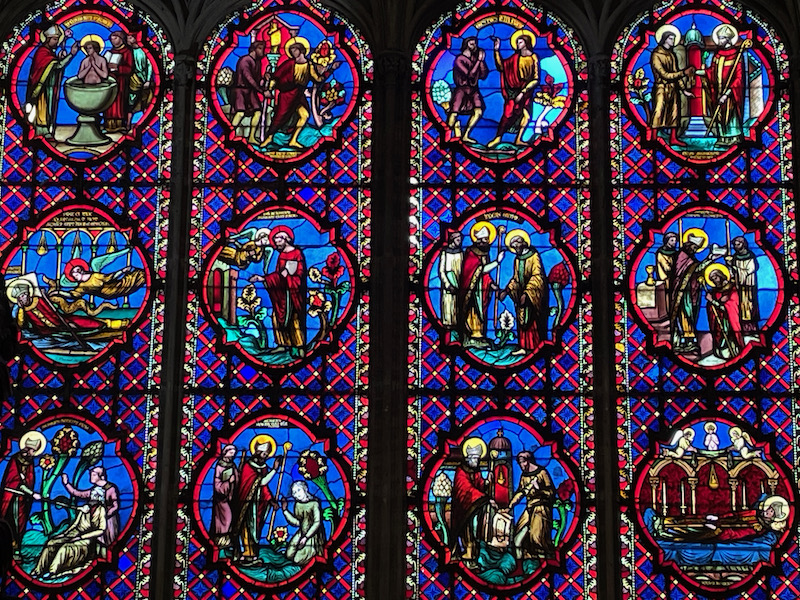
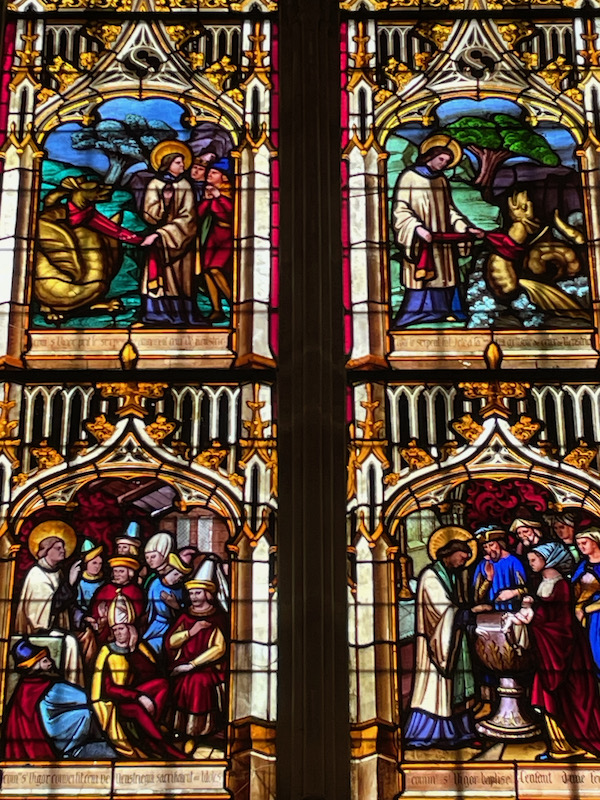
The choir stalls, done nearby in Caen, are Renaissance style and date back to 1589. There were 104 of them originally but only 50 of them remain.
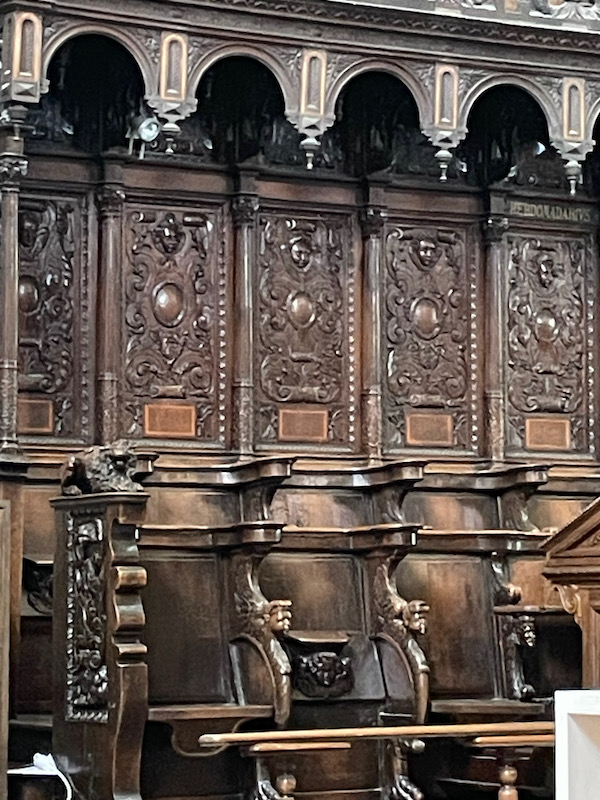
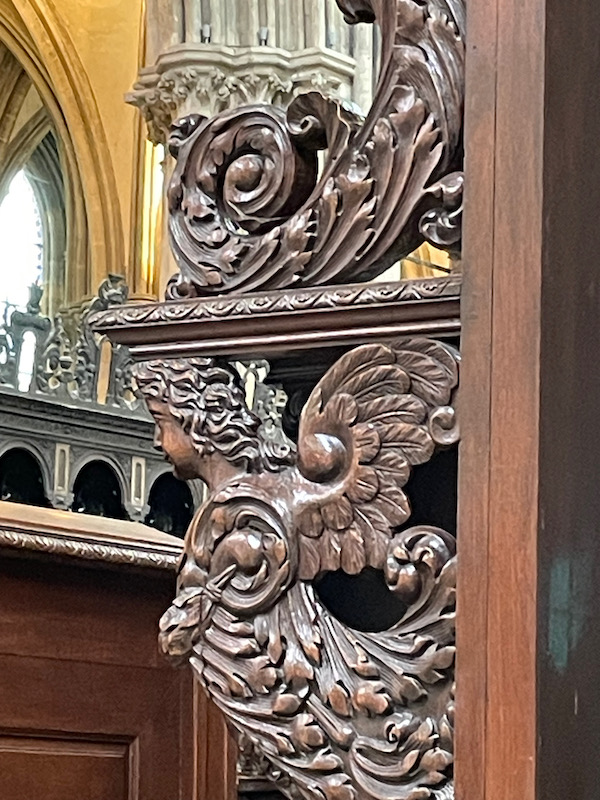
The Norman crypt is the oldest part of the cathedral, dating back to the first half of the 11th century. It was filled in and closed in the 13th century and was somewhat forgotten. It was excavated in the 15th century for the burial of a Bishop, and the mural paintings date back to that time.
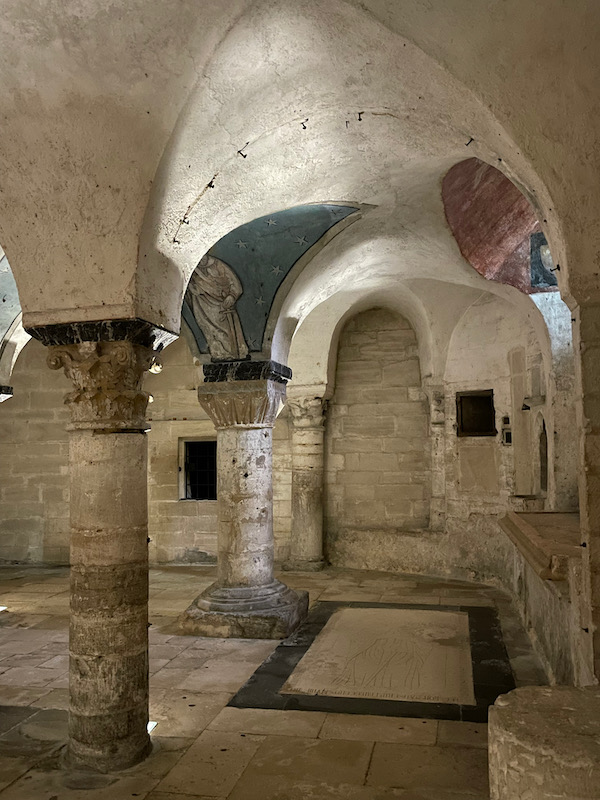
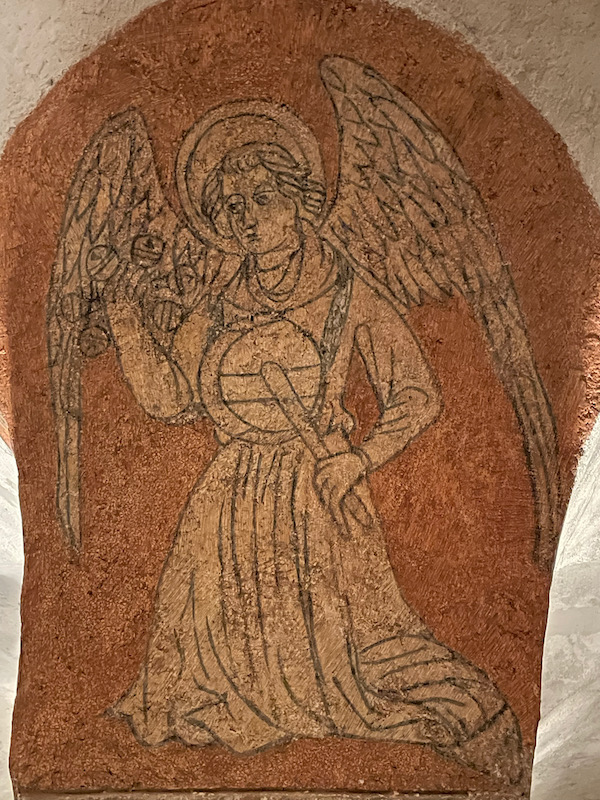
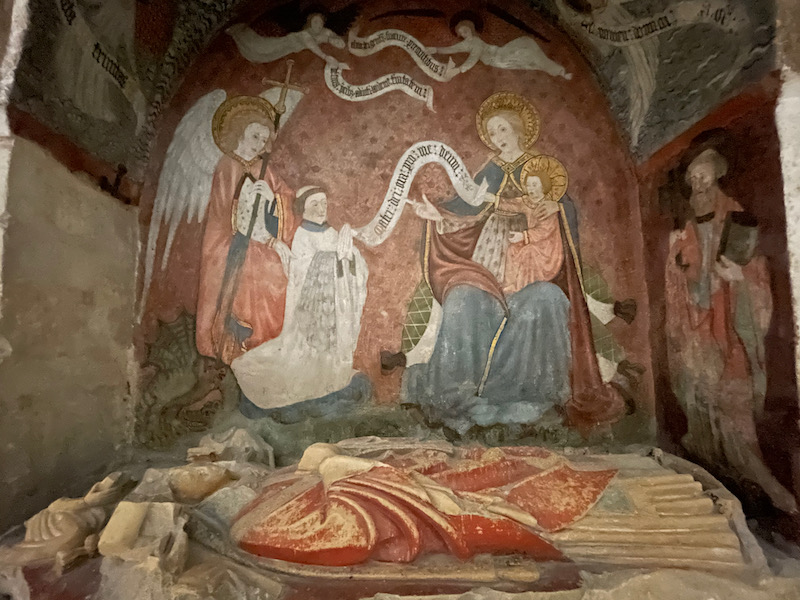
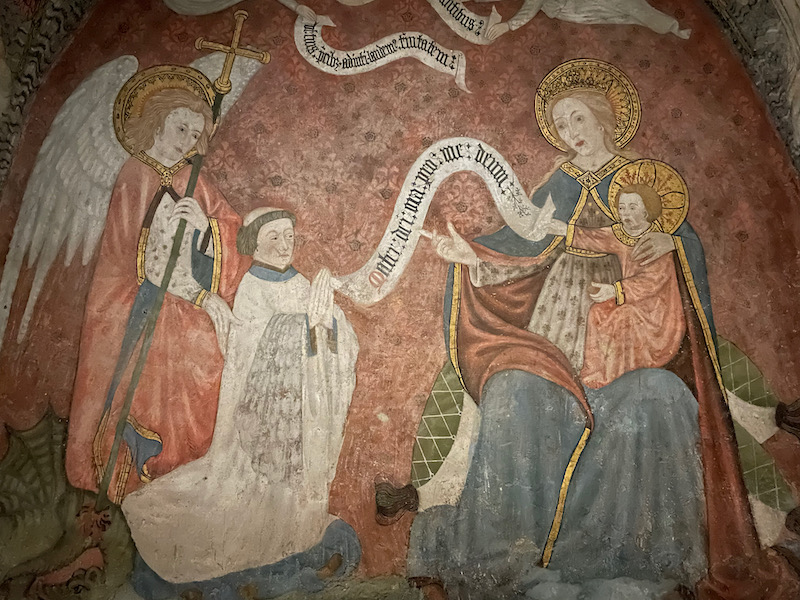
Chapel of Saint-Eloi and Saint Robert, with painted murals from the 17th century.
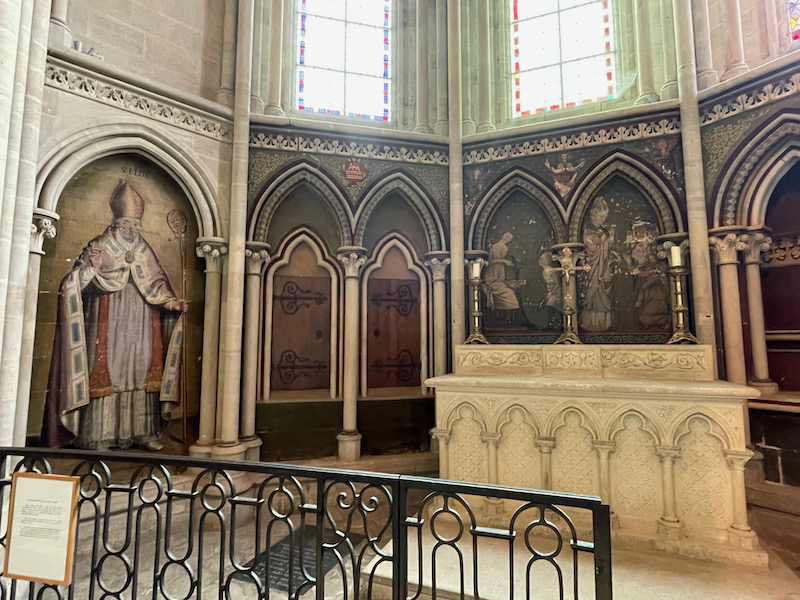
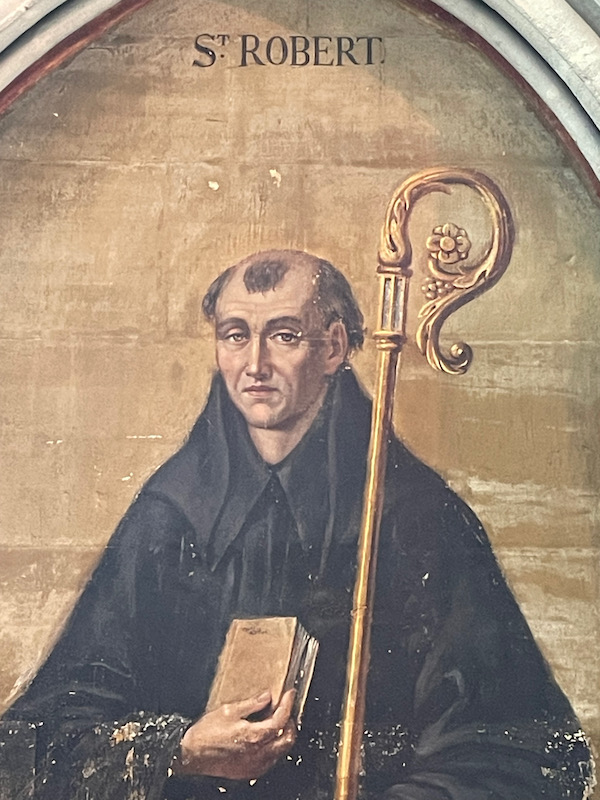
The "cult" of Saint Michael has a long history in Normandy and there is a celebration of the appearance of the Archangel at Mont-Tombe, which is now called Mont-Saint-Michel.
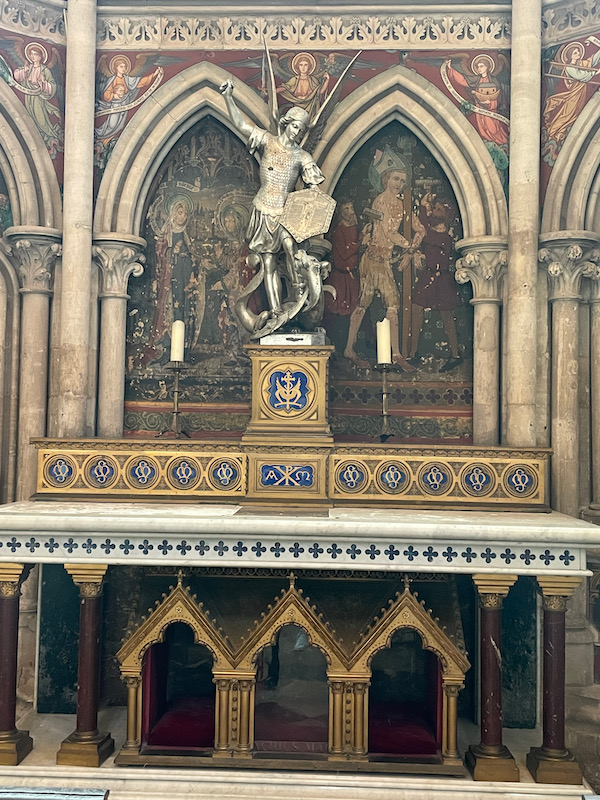
The Chapel of Saint Andre and Saint Leon was created in 1525 and is quite colorful, with a polychrome wooden statue in the corner showing Saint Cecile holding an organ, as she is the patron saint of musicians.
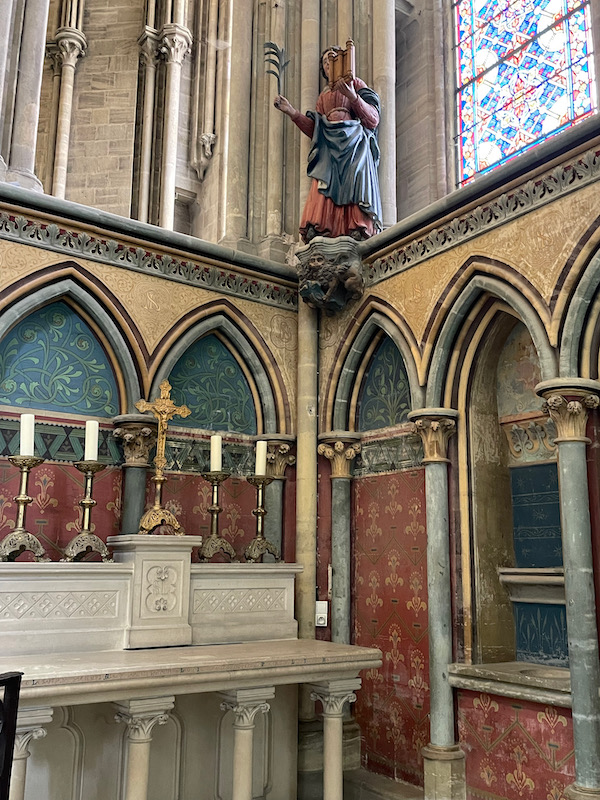
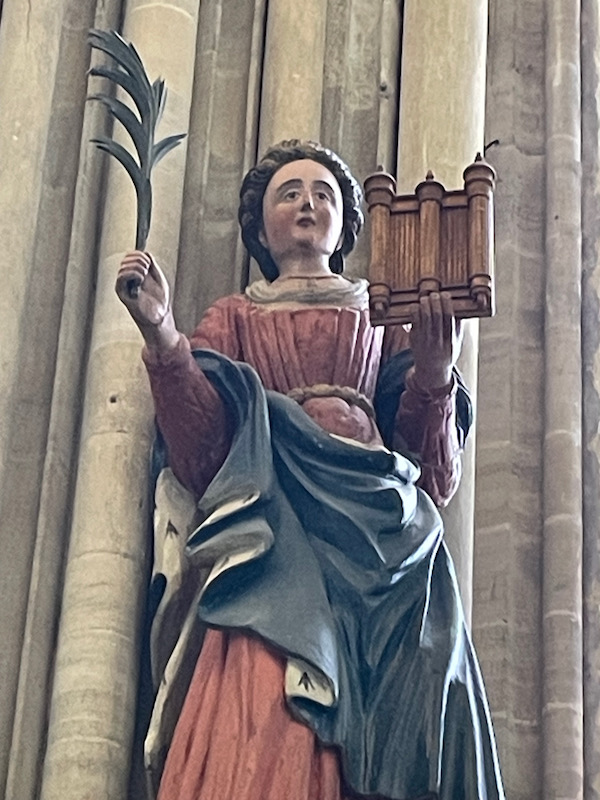
The preaching pulpit has one of the most elaborate canopies that I have seen. Created in 1786, the Baroque canopy has cherubs seated on a stucco cloud, topped by a globe-carrying allegory of religion.
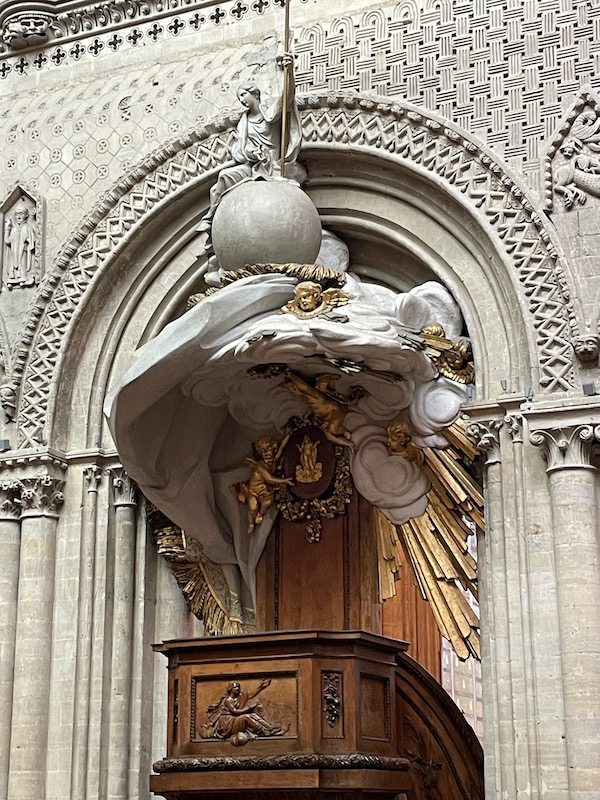
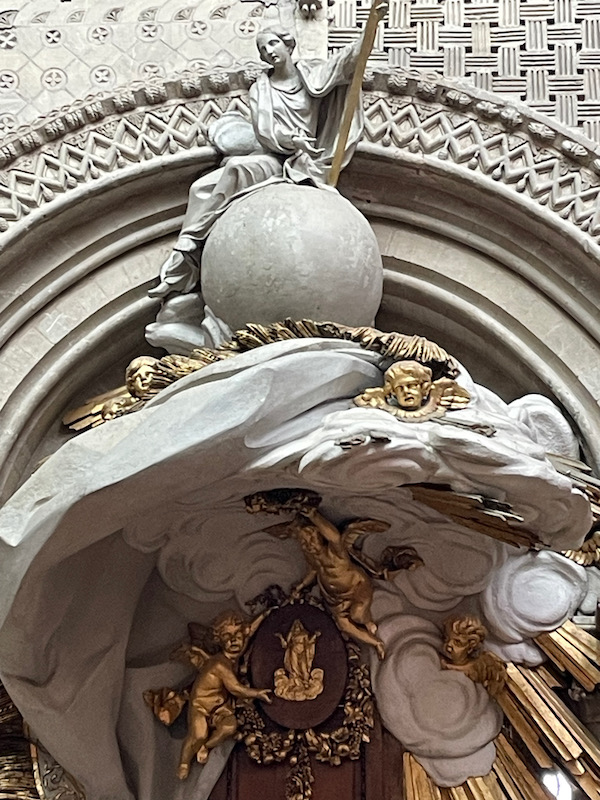
And then a couple from the side/back of the church. You may wonder what is going on with the bright blue modern-looking stained glass window. Well, There is on ongoing project to create new stained-glass windows using glass prisms, which would refract the light into multicolored projections throughout the church. As part of the project, the upper parts of the window would have a colored glass and the lower/rectangular sections would have plain glass with prisms in the middle. If you are really interested, there is an interesting article that can be read in English on this project.
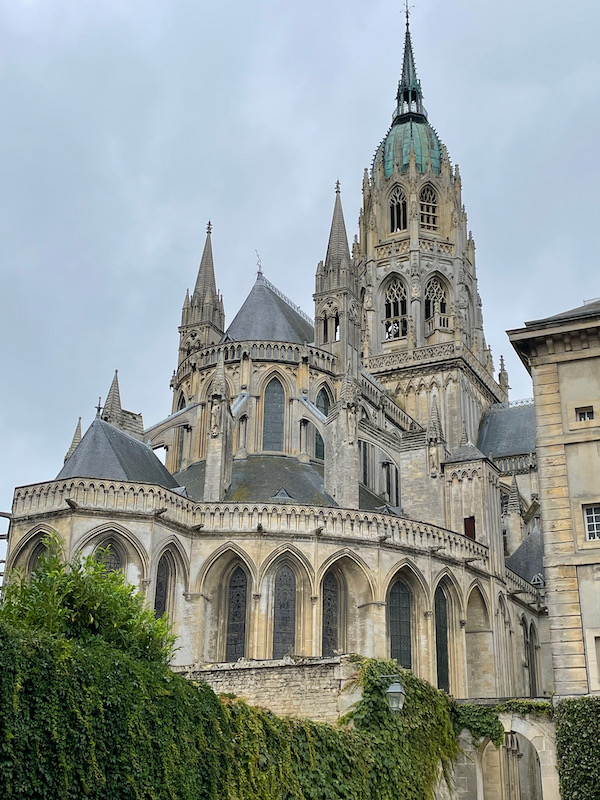
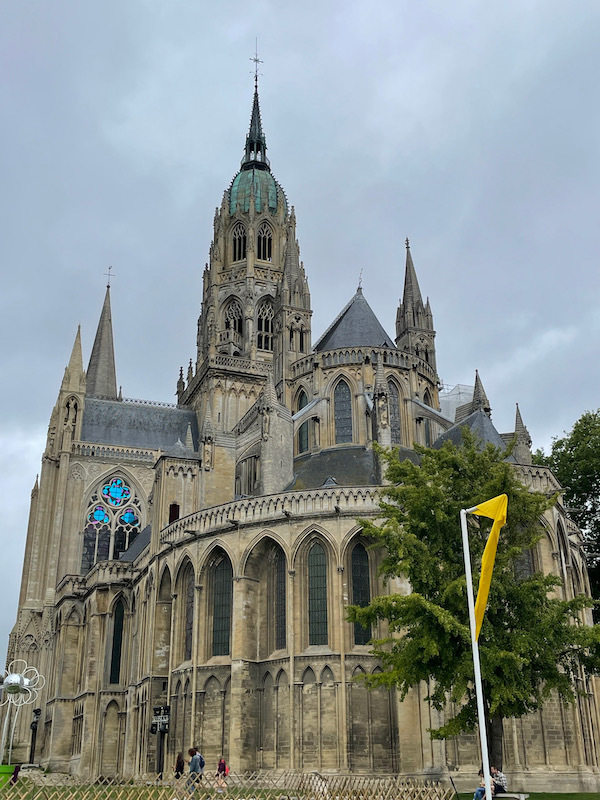
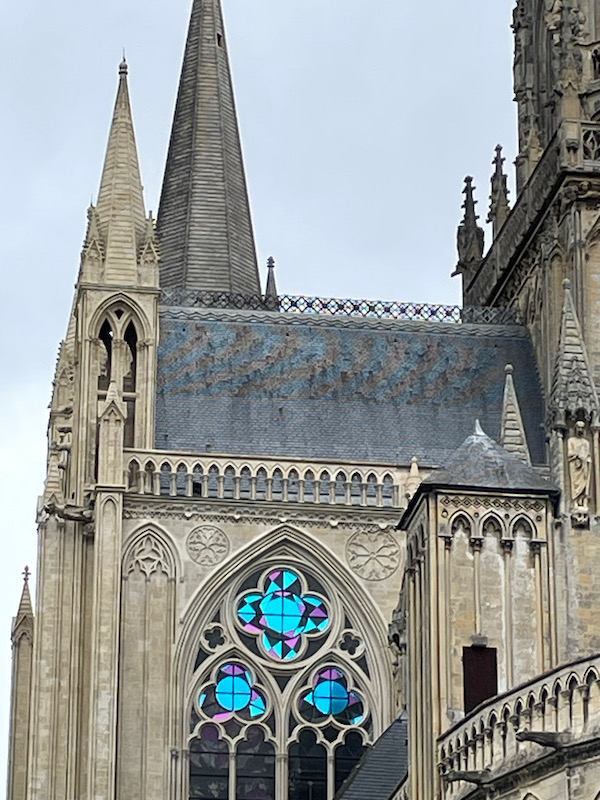
There are several old half-timbered houses. This first one is on rue des Cuisiniers and dates back to the 14th and 15th centuries.
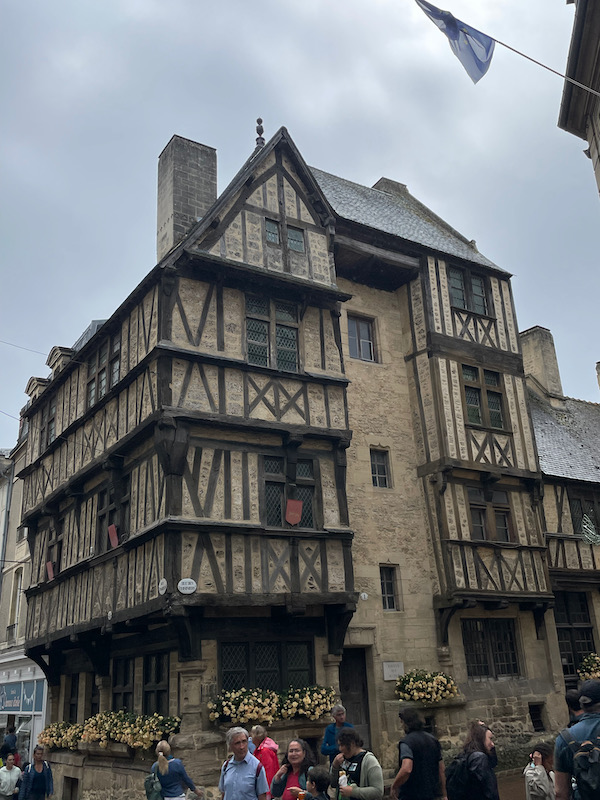
Dating from the 15th century, the "House of Adam and Eve" is a half-timbered house that is, in fact, made up of two buildings. It owes its name to its statuettes that illustrate the theme of original sin with Adam and Eve. The close-up picture shows the tree in the garden of Eden and the serpent.
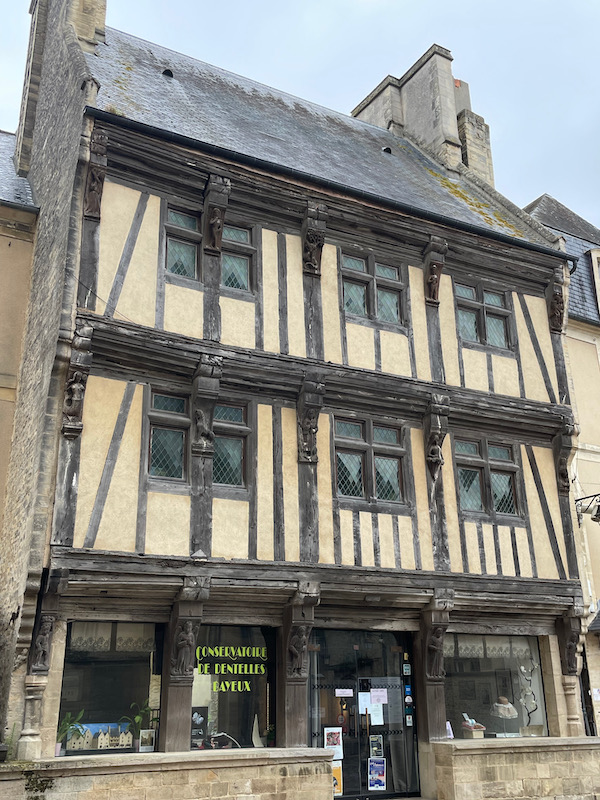
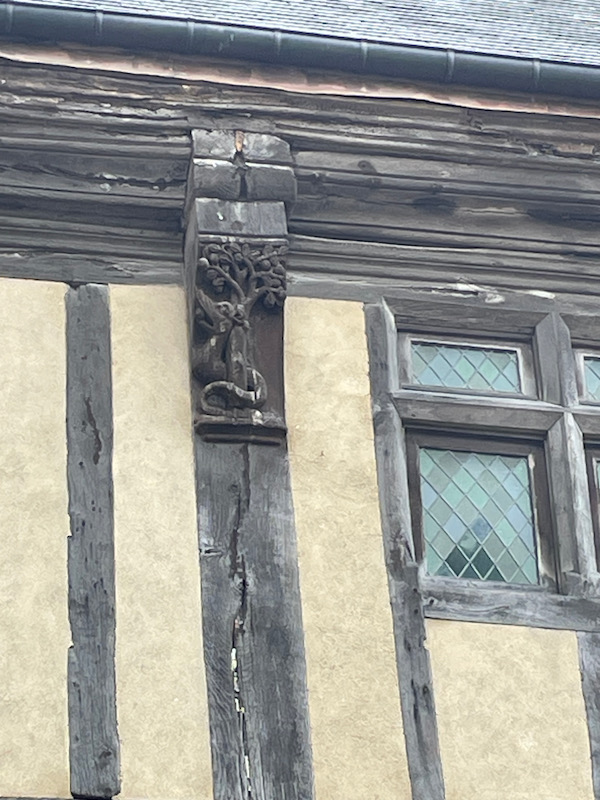
This red-and-white half-timbered house, the Grand Hôtel d'Argouges, was built after the end of the Hundred Years War in the second half of the 15th century. It is sometimes called Maison de François I because the owner, who was the baker to the king, welcomed François I and his son, the future Henri II, there in 1532.
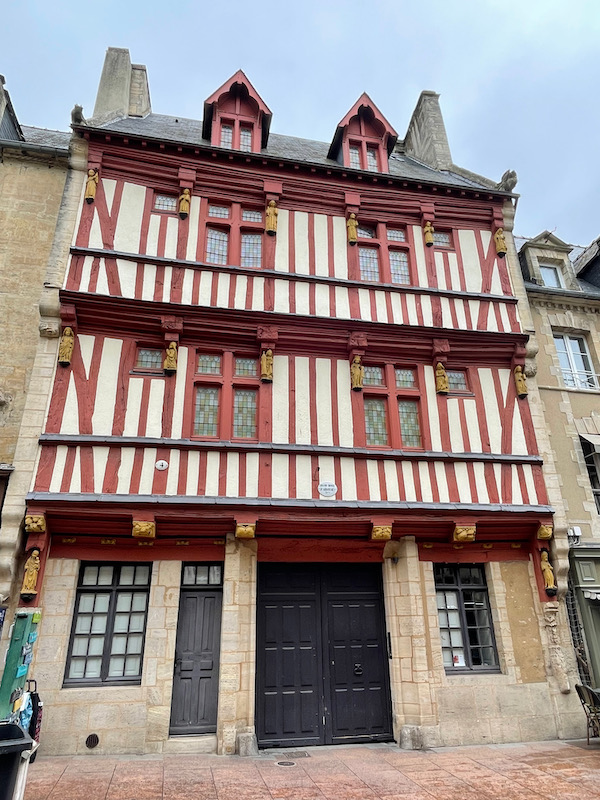
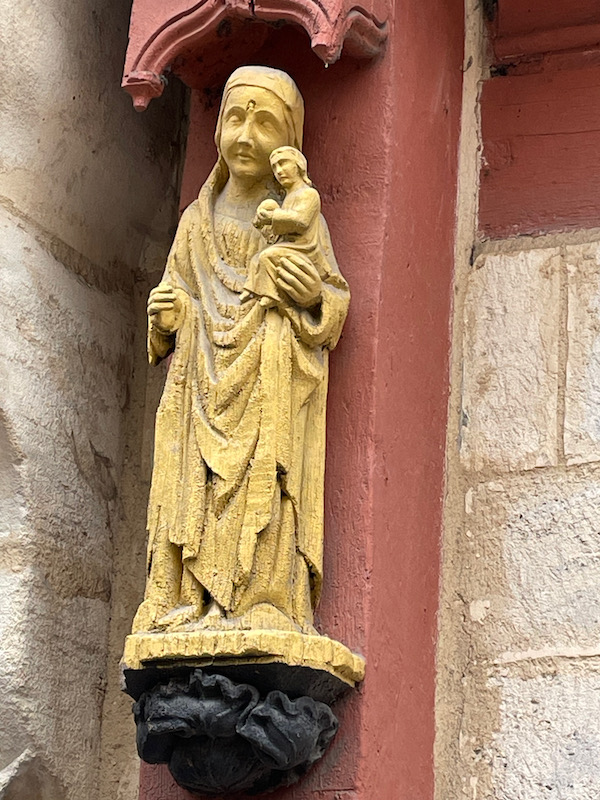
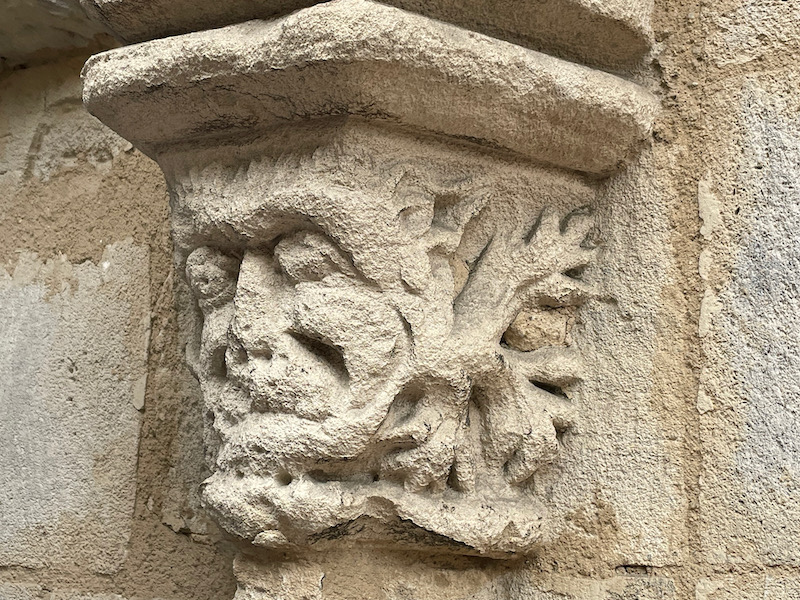
Place Charles de Gaulle commemorates a visit the General de Gaulle made to Bayeux on June 14th, 1944, following the D-day landings a week earlier. Here in Bayeux, he set up his headquarters making the town the administrative capital of France until the liberation of Paris.
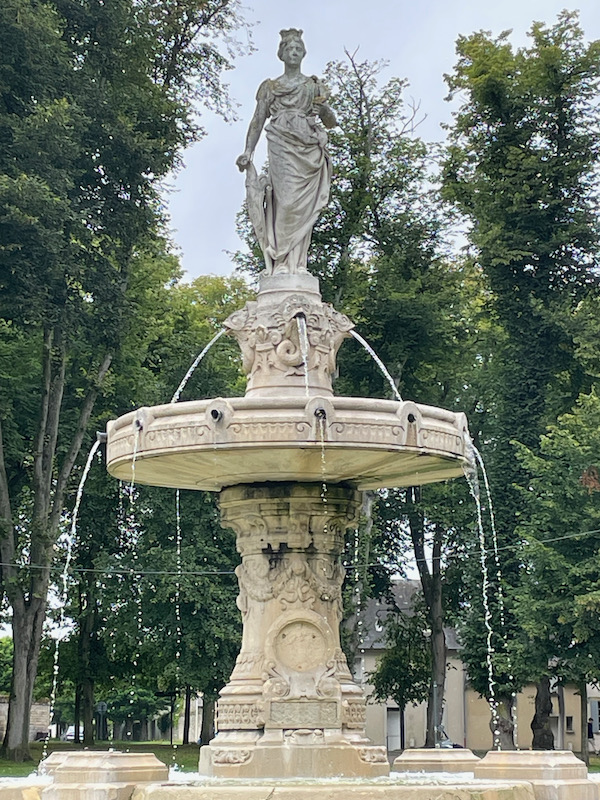
The 18th-century Hotel de Castilly doesn't really look like much from the street, but if you peek through the gate, the building is quite nice.
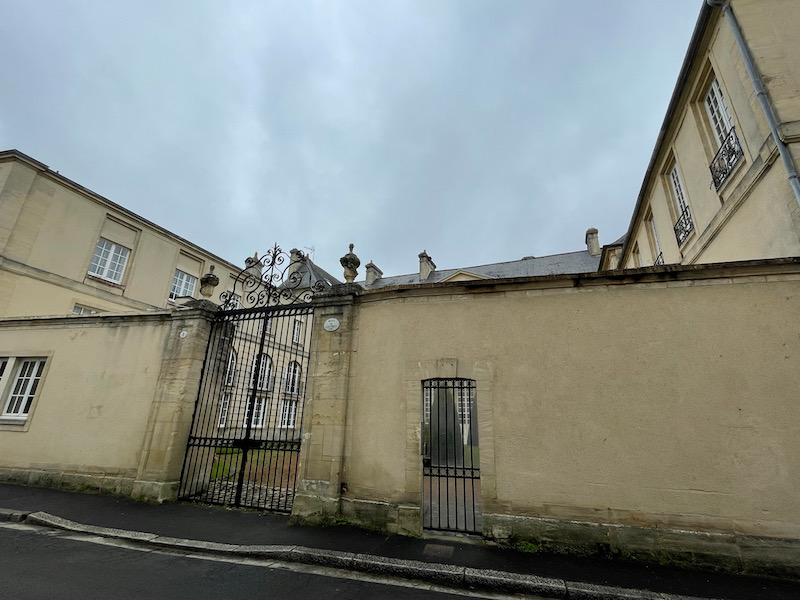
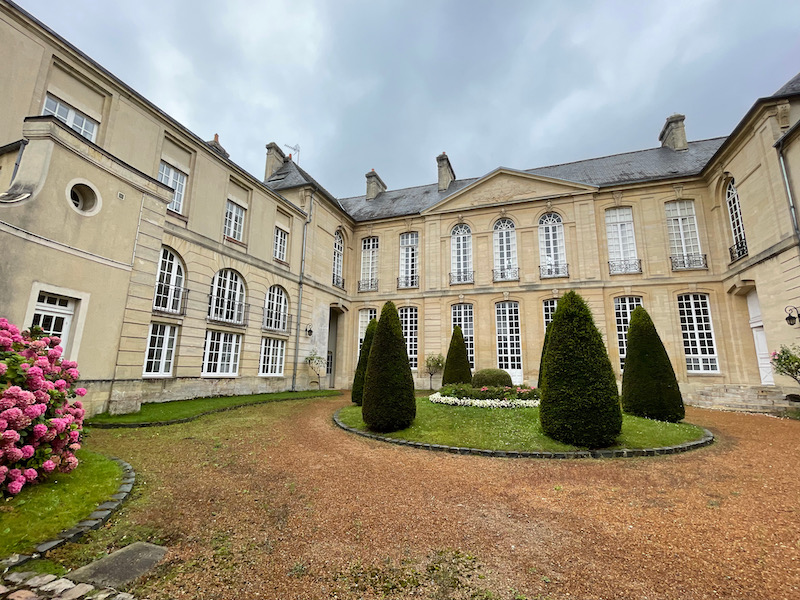
The Hotel Tardif, from the 18th century, has a really nice courtyard. It now a luxury B&B that has both individual rooms and "tourist" apartments. We won't be staying there anytime soon since puppies are not allowed.
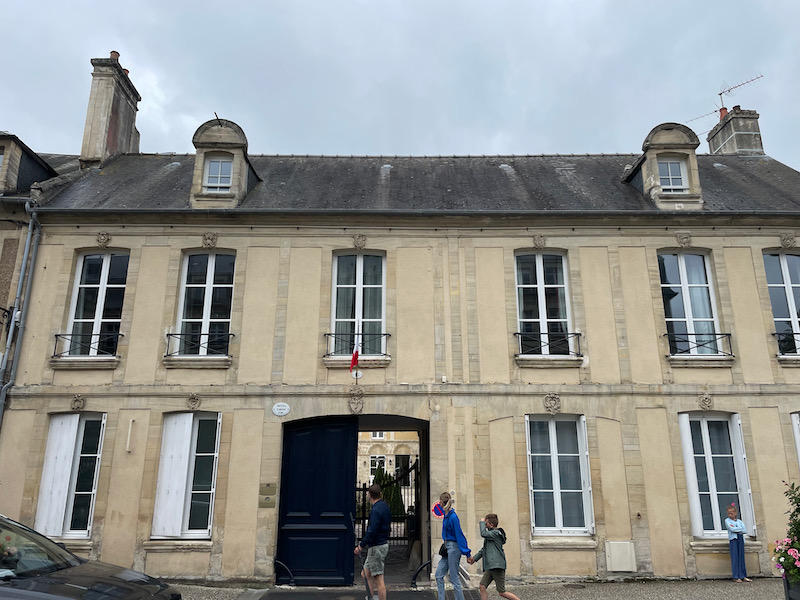
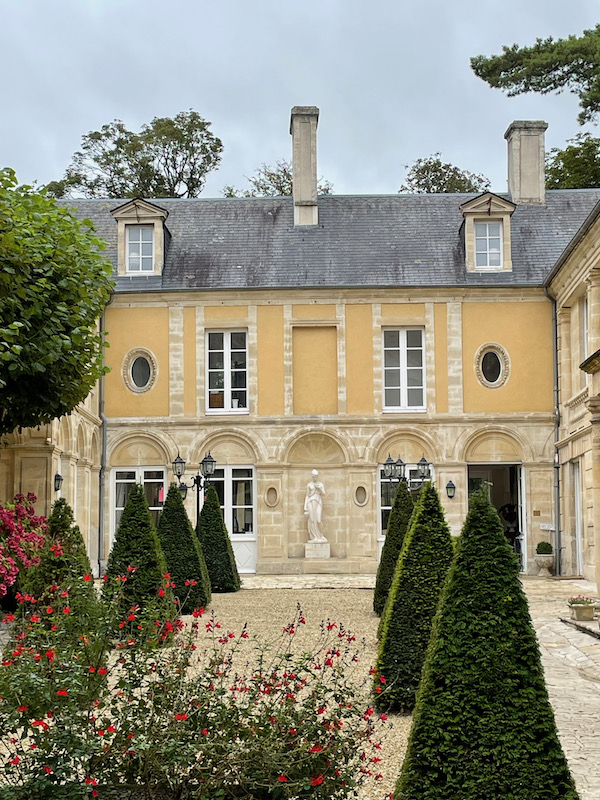
We ended up at the Tapestry museum, where the Bayeux Tapestry is displayed. It is an 11th century linen tapestry that was embroidered with scenes depicting the the end of the reign of King Edward the Confessor of England in 1064, through the Battle of Hastings in 1066 and the crowning of William, Duke of Normandy, as King of England. You go through the museum with an audioguide that you can't stop (which is one way to keep people from lingering), and no pictures are allowed. A copy was created in the 19th century in England, who recreated it stitch-by-stitch. This one is displayed at the Reading Museum in a special gallery. What is great is that they have a great website that explains every scene and gives a close-up picture. This way, you can go through it without actually having to travel :-) If you are interested, you can go through each scene of the tapestry.
The museum itself is in a former 17th century seminary that took over a 13th century priory. The chapel itself is from the 13th century and the interior was redone in the 19th. Today, they have information in the chapel that talks about the potential of a new custom-built museum for the tapestry
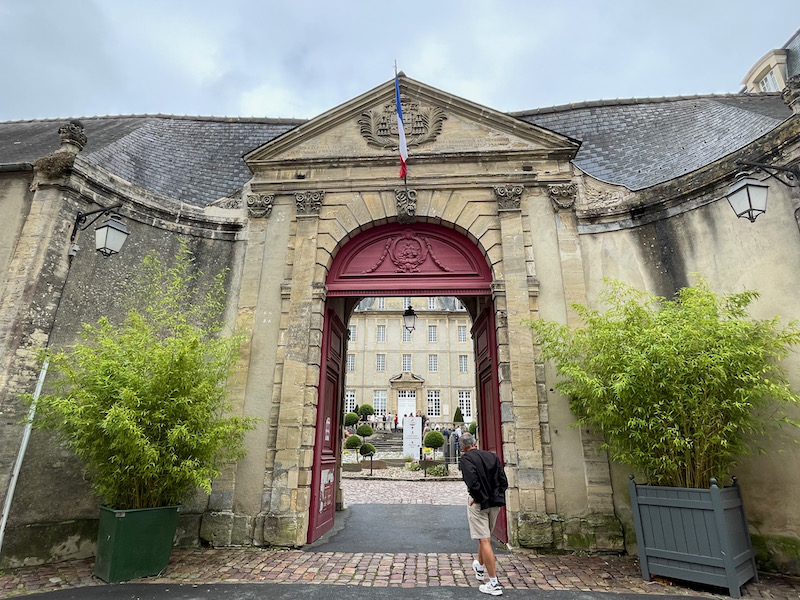
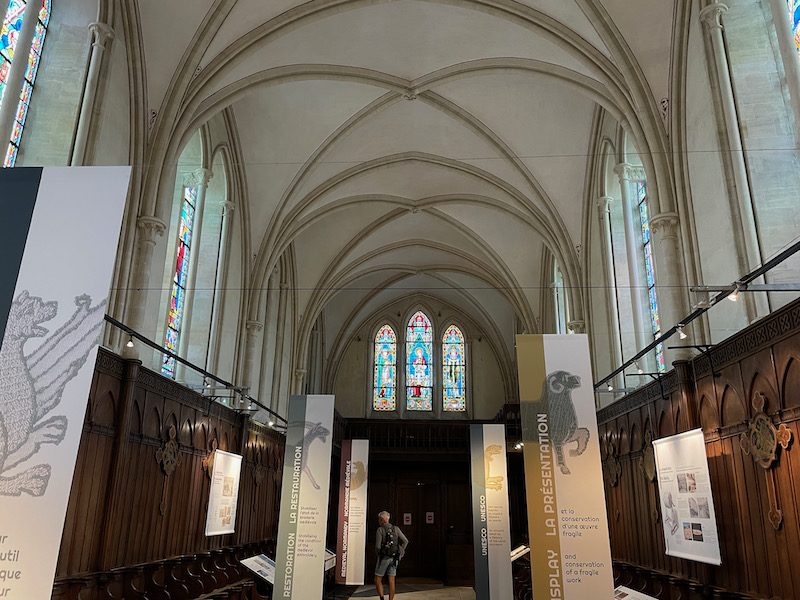

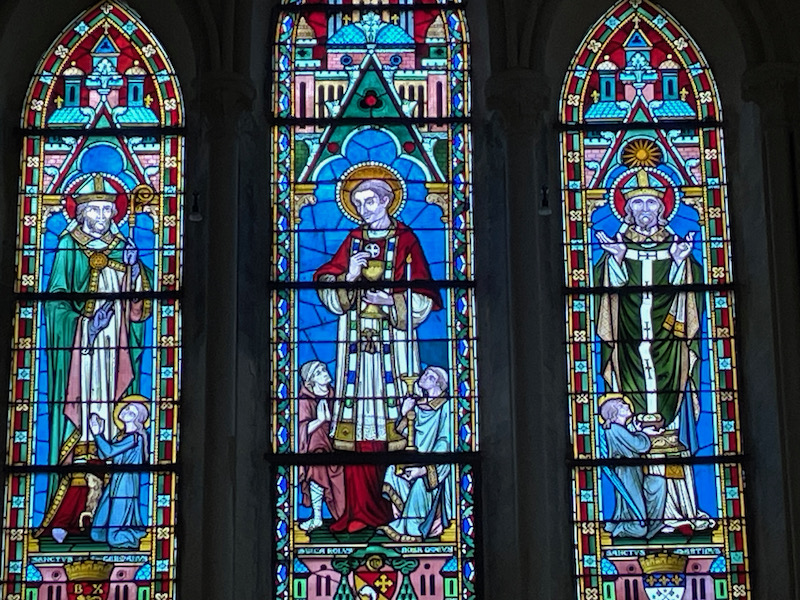
There was also an exhibition that had lots of information, and there I took a couple pictures to show you a little of the tapestry (in fact, a picture of a picture of the tapestry). Here you can see horses with the soldiers riding them. Compare the tapestry to the statue showing the soldier, dressed in chain mail, with the odd-shaped Norman shield. The tapestry is embroidered with grey circles to indicate the chain mail. The detail in the stitching is quite amazing.
